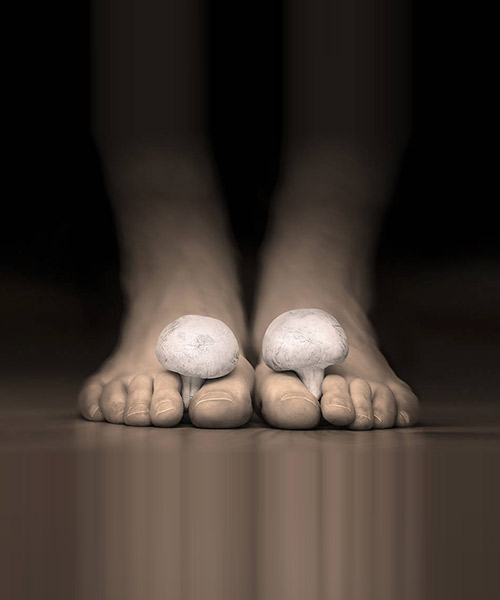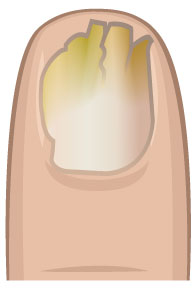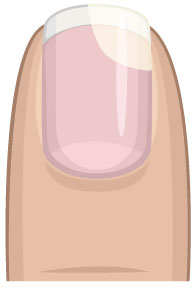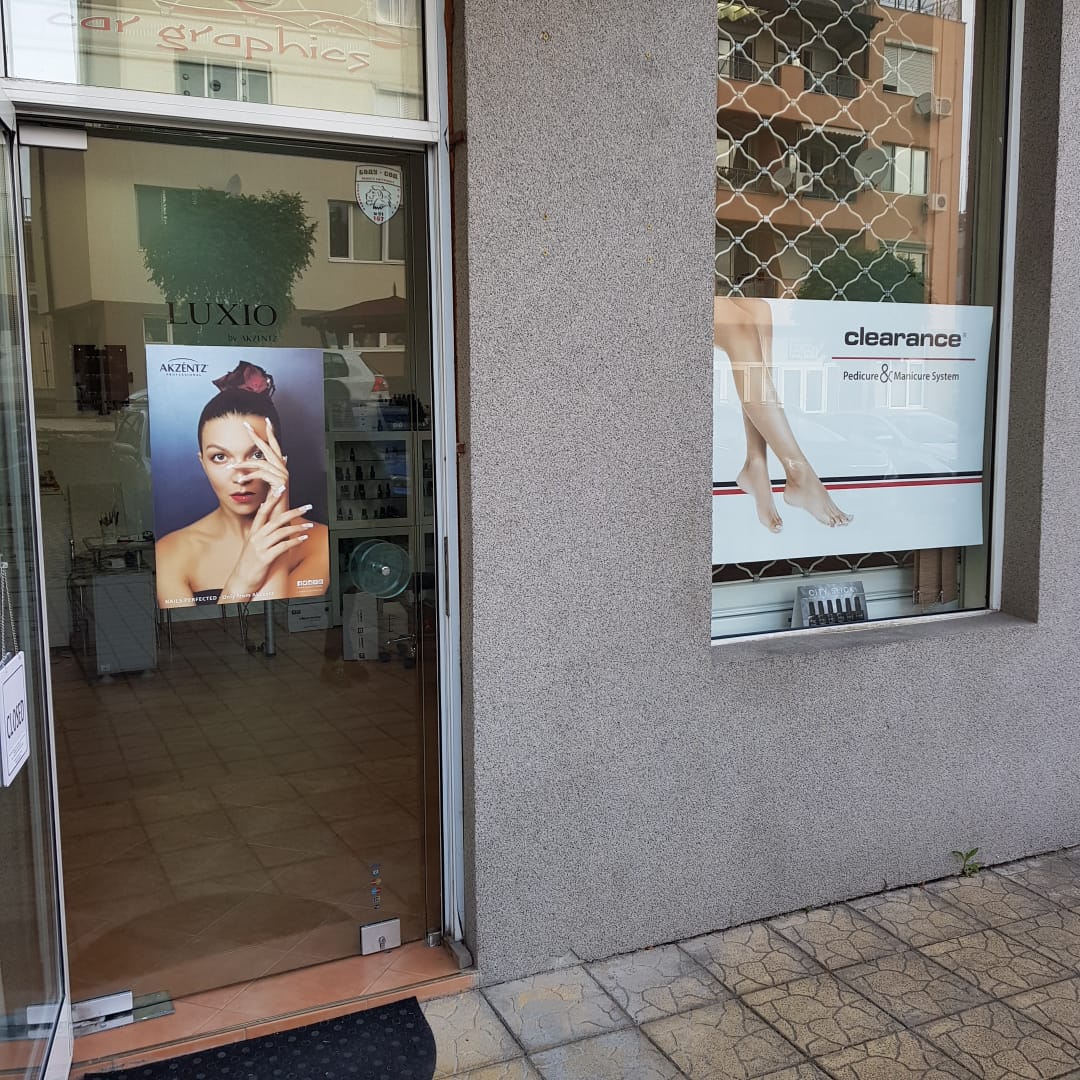
Nail fungus - onycholisis & mycosis
Unfortunately nail fungus is a very common condition. The condition is caused by one or several organisms – also known as FUNGI. Nail fungus is stubborn to treatment, not to mentions annoying and embarrassing. Nail fungus is also contagious and is most commonly passed by barefoot exposure to wet communal areas or trough using unsterilized equipment or instruments during pedicure or manicure treatment.
There are several factors which make one person more susceptible to fungal infection than the other:
- Weakened or low immune system such as during pregnancy, diabetes, cancer, or after a serious sickness or prolonged use of antibiotics and other medications.
- Direct and repeated injury to the nail, as can happen to football players or ballet dancers.
- Climate – nail fungus is more common in colder climates – less exposure of the foot to fresh air, closed shoes.
- Older people are more likely to develop nail fungus as nail growth process slows down with age, nail become brittle and dry – an easy target for fungi.
Active Nail Solution
Fast and effective treatment and prevention of nail fungus and eczema on hands and feet. Active Nail solution is simple to use, suitable for everybody, does not have any age or state of health limitations.
Difference between onycholisis & mycosis
Many people confuse nail fungus or mycosis with onycholisis, however there is a big difference.
Onycholysis is a condition when nail separates from the nail bed. Causes of onycholysis are as follows:
- Direct injury to the nail or mechanical injury of the surrounding tissue – cuticle
- Very tight and/or narrow footwear which puts extra pressure of the nails
- Very long nails or artificial nail extensions ( acrylic or gel)
- Excessive filling of the nail bed thins out the nail and forces its separation
- Constant exposure to chemicals and irritants – acrylic/gel manicure or pedicure, harsh household chemicals

Mycosis

Onycholysis
When onycholysis is left untreated, it presents a favorable stage for spread of fungi organisms and development of nail fungus or mycosis. The fungi spores have easy excess to the area where the nail has separated from the nail bed. The “pocket” has all the vital conditions for fungi’s survival and spread – heat, humidity, limited light. The fungi access to unlimited food supply – debris which accumulates between the nail and and the nail bed. Once the fungi organisms invade the nail, the condition is called mycosis. Nail mycosis has one or all of the following characteristics:
- Change in in the color of nails ( yellow, grey, green, purple or blue )
- Change in the texture of the nail and thickening of the nail bed ( thick brittle nails which start to crumble when filed )
- Change in shape of the nail
- Bed odor coming from the nail
In general, onycholysis is much easier to treat than fully developed mycosis. With proper treatment onycholysis can disappear from the nail within a few weeks/month depending on the growth speed of the nail and how deep is the “pocket” or the separation. In general, for a healthy individual, it takes from the cuticle to fully cover the nail bed: 2 to 3 months to grow nails and 6 to 8 months to grow tow nails. On the other hand, when mycosis invades the nails it start to “eat” at the nail bed causing its mutation, thus slowing down the growth process and destroying the nail in its core.
The treatment of onycholysis or mycosis can be said to be successful and completed only once the nail growth back to fully cover and attached to the nail bed.
The treatment of onycholysis or mycosis can be said to be successful and completed only once the nail growth back to fully cover and attached to the nail bed.










